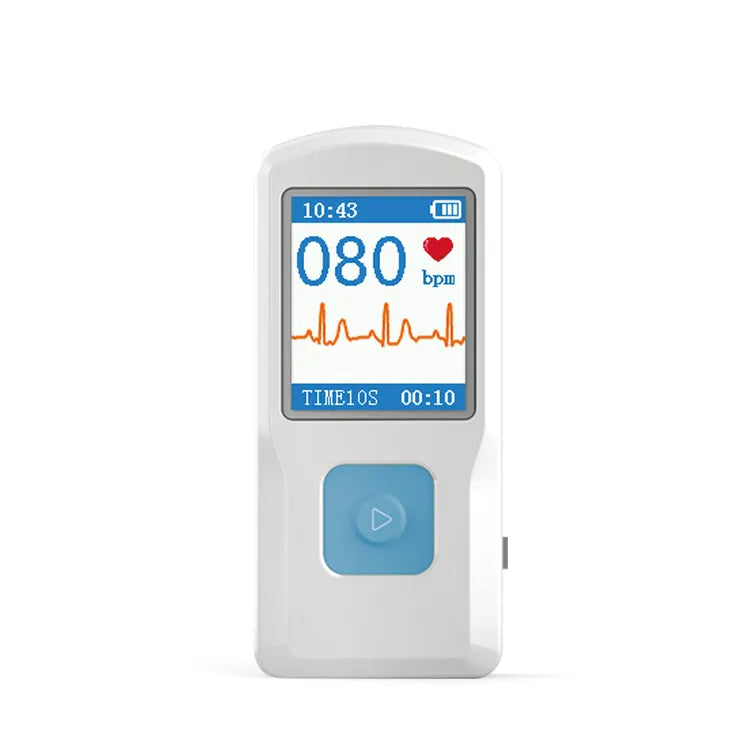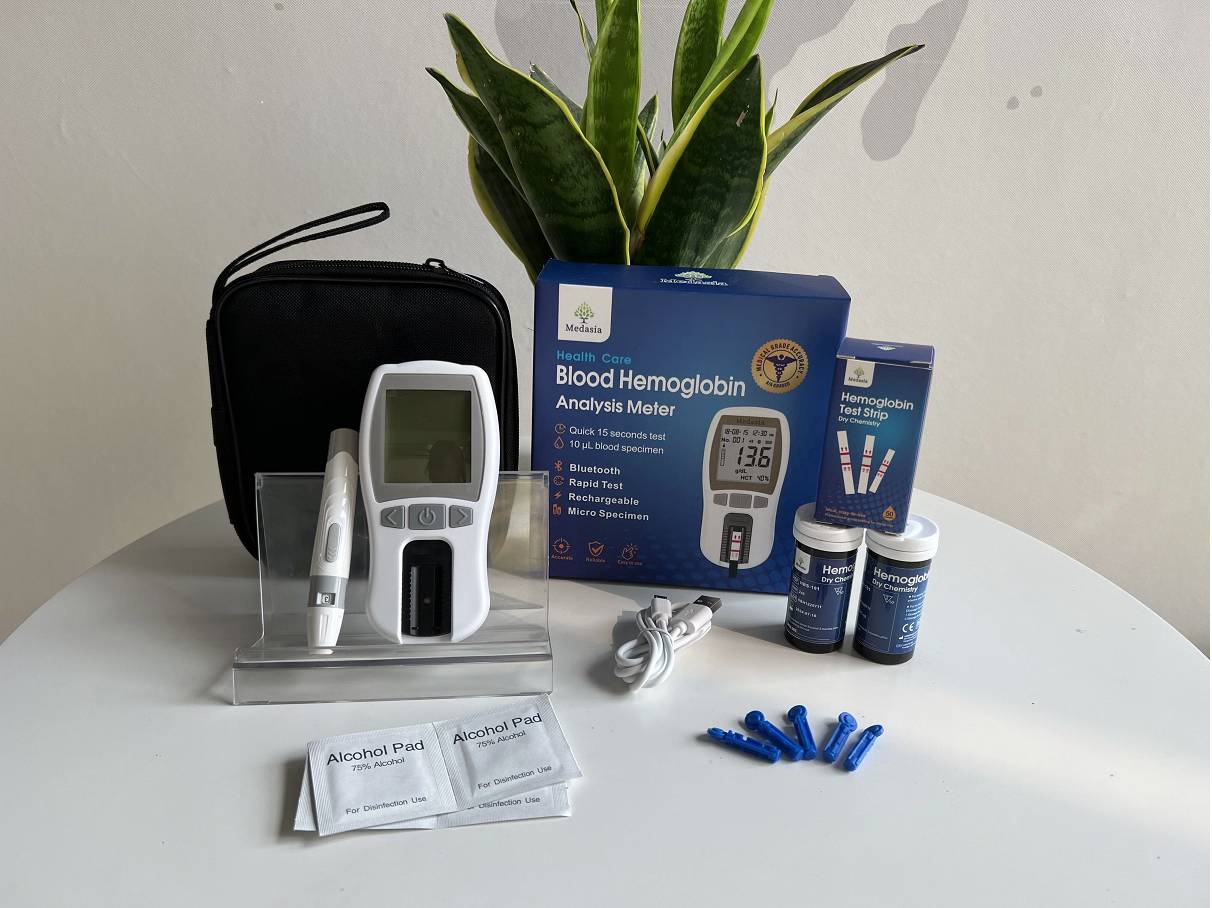Dépistage et diagnostic de l'anémie ferriprive pendant la grossesse

L'anémie ferriprive est la forme d'anémie la plus courante pendant la grossesse. La carence en fer est la maladie la plus répandue chez les femmes en âge de procréer dans le monde, et elle est encore plus courante pendant la grossesse en raison des besoins accrus en fer. Cet article traite des causes et des risques de la carence en fer pendant la grossesse, du dépistage et du diagnostic de l'anémie ferriprive.
Définition et incidence
L'Organisation mondiale de la santé recommande les concentrations d'hémoglobine (Hb) suivantes pendant la grossesse :
- Premier trimestre (0-12 semaines) : Hb ≥ 11 g/dL
- Deuxième trimestre (13-26 semaines) : Hb ≥ 10, 5 g/dL
- Troisième trimestre (27 semaines et plus) : Hb ≥ 11 g/dL
Si le taux d'hémoglobine est inférieur à ces normes, cela peut suggérer une anémie, en particulier une anémie ferriprive, et une évaluation plus approfondie ainsi qu'une supplémentation en fer doivent être envisagées. L'anémie pendant la grossesse est un problème de santé publique et de santé publique mondial.
La prévalence mondiale de l'anémie chez les femmes enceintes est de 41, 8 %, avec 57, 1 % des femmes enceintes touchées en Afrique, 48, 2 % en Asie du Sud-Est et 24 à 25 % dans les Amériques et en Europe. En Chine, la prévalence de l'anémie chez les femmes enceintes varie de 42 % à 73 %, avec une prévalence urbaine de 34 % et une prévalence rurale de 46 %. La prévalence de l'anémie au début, au milieu et à la fin de la grossesse est respectivement de 36 %, 52 % et 60 %.
Causes et besoins en fer pendant la grossesse
L'anémie ferriprive liée à la grossesse est fréquente en raison de changements physiologiques et pathologiques, principalement liés à une demande accrue en fer et à une insuffisance relative ou absolue de l'apport en fer.
Pendant la grossesse, le test de ferritine est un outil efficace pour surveiller la stabilité des taux de ferritine dans le sang. La procédure est simple et les résultats sont disponibles rapidement. Ce test offre la commodité d'obtenir des résultats rapides de ferritine à domicile, ce qui le rend idéal pour les femmes enceintes qui ne peuvent pas quitter leur domicile, et peut aider à la détection précoce d'éventuelles carences en fer.
1. Augmentation de la demande en fer
Au cours d'une grossesse normale, les besoins totaux en fer sont d'environ 1 240 mg, dont 500 à 600 mg sont nécessaires pour augmenter le volume des globules rouges et environ 300 mg pour le fœtus et le placenta. Les besoins quotidiens en fer des femmes enceintes sont d'environ 4, 4 mg (passant de 0, 8 mg/j en début de grossesse à 7, 5 mg/j en fin de grossesse) , et le taux d'absorption moyen du fer est d'environ 10 %, ce qui signifie qu'un apport alimentaire en fer de 40 mg/j est nécessaire.
2. Apport insuffisant en fer
L'apport en fer peut être affecté par des vomissements en début de grossesse ou par des préférences alimentaires.
3. Troubles de l'absorption du fer
La malnutrition ou les préférences alimentaires entraînent souvent un apport insuffisant en protéines, ce qui affecte l'absorption du fer. Des troubles gastro-intestinaux tels qu'une faible acidité gastrique, une atrophie de la muqueuse gastrique ou une diarrhée chronique peuvent également entraver l'absorption du fer.
4. Augmentation de la perte de fer
Les troubles de la coagulation liés à la grossesse, tels que le placenta praevia, et les maladies chroniques, notamment les infections et les maladies chroniques du foie ou des reins, peuvent également entraîner une anémie.
5. Stockage insuffisant du fer
L'anémie avant la grossesse peut persister ou s'aggraver pendant la grossesse. Environ 40 % des femmes ont de faibles réserves en fer ou une carence en fer avant la grossesse (ferritine sérique) .
Risques d'anémie
Risques maternels
Pendant la grossesse, une série de changements physiologiques se produisent dans le système circulatoire maternel, notamment la dilution du sang, qui aggrave l'anémie et augmente la charge sur le cœur. L'anémie réduit la capacité de transport d'oxygène du sang et, bien qu'une anémie légère puisse avoir un impact minime sur la grossesse, une anémie sévère peut entraîner de graves conséquences.
En raison de réserves insuffisantes en oxygène, les femmes anémiques tolèrent moins bien les pertes sanguines, ce qui augmente le besoin de transfusions et le risque de complications liées à la transfusion. Même si la perte de sang pendant le travail ou le post-partum est minime, elle peut entraîner un choc, voire la mort. Selon les données de l'OMS, la mortalité maternelle liée à l'anémie dans le monde est de 40 %.
Risques pour le fœtus
En cas d'anémie, la réduction de l'apport d'oxygène au placenta peut entraîner un retard de croissance fœtale, une détresse fœtale, une fausse couche, une naissance prématurée, une mortinatalité, une asphyxie néonatale et une encéphalopathie hypoxique-ischémique. L'incidence de fausses couches et de naissances prématurées augmente avec la gravité de l'anémie.
Risques néonatals
Les taux de morbidité et de mortalité des nouveau-nés de mères anémiques sont plus élevés. Lorsque les réserves en fer de la mère sont épuisées, les réserves en fer du fœtus sont réduites, ce qui entraîne une anémie ou une carence en fer au cours de la première année de vie. Les enfants carencés en fer peuvent présenter des anomalies du comportement et un faible indice de développement mental de Bayley. La supplémentation en fer peut améliorer les réserves en fer de la mère et augmenter les réserves en fer du nouveau-né, ce qui aide à prévenir la carence en fer au cours de la première année et réduit la mortalité néonatale. La prévention de la carence en fer pendant la grossesse a également un effet sur la réduction du risque d'hypertension chez les enfants à l'âge adulte.
Chez les fœtus et les nourrissons, le fer est principalement utilisé pour la production de globules rouges. Si l'apport en fer ne suffit pas à répondre à cette demande, cela peut entraîner une carence en fer dans d'autres tissus, notamment les muscles squelettiques, le cœur et le cerveau. Les nourrissons et les enfants nés de mères carencées en fer ont tendance à avoir un développement cognitif cérébral plus lent et un QI inférieur à ceux nés de mères ayant un apport suffisant en fer.
Dépistage et diagnostic
Dépistage
Toutes les femmes enceintes doivent subir un dépistage de l'anémie lors de leur premier examen prénatal et à nouveau à 28 semaines de grossesse. La mesure de l'hémoglobine est le test de dépistage initial de l'anémie, et un test de ferritine sérique peut être effectué si les conditions le permettent.
Même avant que le taux d'hémoglobine ne baisse, les femmes enceintes peuvent déjà souffrir d'une carence en fer. Il est donc recommandé de tester la ferritine sérique si possible. En fonction des taux de ferritine sérique, des décisions peuvent être prises quant à l'opportunité et à la manière de prendre des suppléments de fer. Pour celles qui ne peuvent pas tester la ferritine sérique, la supplémentation en fer doit être guidée par les données épidémiologiques locales sur la prévalence de l'anémie chez les femmes enceintes de la région.
Pour les femmes enceintes qui trouvent gênant de se rendre régulièrement dans des établissements de santé, l'utilisation d'un lecteur d'hémoglobine à domicile peut être une solution efficace. Ce dispositif permet une surveillance continue des niveaux d'hémoglobine, permettant aux femmes d'évaluer rapidement la teneur en hémoglobine de leur sang et d'identifier rapidement tout signe potentiel d'anémie.
Diagnostic
L'anémie liée à la grossesse est diagnostiquée lorsque l'Hb est inférieure à 110 g/LL'anémie est classée comme :
- Anémie légère : Hb 100-109 g/L
- Anémie modérée : Hb 70-99 g/L
- Anémie sévère : Hb < 70 g/L
Si le taux d'Hb est inférieur à la limite physiologique inférieure pendant la grossesse, il faut d'abord envisager une anémie ferriprive. Des tests de laboratoire doivent être effectués pour diagnostiquer l'anémie et la carence en fer. Les tests de laboratoire pour l'anémie ferriprive liée à la grossesse comprennent :
Numération globulaire complète (NFS) : La NFS est le principal test de diagnostic de l'anémie et comprend la concentration d'Hb, l'hématocrite, le volume globulaire moyen (VGM) , l'hémoglobine corpusculaire moyenne (HCM) , la numération des globules rouges et la numération des réticulocytes. Dans la plupart des cas, ces paramètres montreront des changements significatifs en cas de carence en fer persistante et sévère. De nombreuses femmes souffrant d'une carence en fer peuvent encore avoir des taux d'Hb dans la plage normale, des tests plus sensibles sont donc nécessaires pour une détection précoce.
Ferritine sérique : La mesure de la ferritine sérique est la référence absolue pour diagnostiquer l'anémie ferriprive dans les tests de laboratoire. Indépendamment des taux d'hémoglobine, la ferritine sérique reflète généralement les réserves en fer de l'organisme. Des taux de ferritine sérique faibles indiquent généralement des réserves en fer insuffisantes, ce qui est un signe précoce d'anémie ferriprive.
Fer sérique, récepteur de transferrine soluble et saturation de la transferrine : Le taux de fer sérique est influencé par de nombreux facteurs et n'est pas un indicateur fiable du stockage du fer. Le récepteur soluble de la transferrine augmente en cas de carence en fer ou d'augmentation de la demande cellulaire en fer et n'est pas affecté par les infections. La saturation de la transferrine est influencée par des facteurs tels que les variations diurnes et la nutrition, ce qui la rend peu fiable pour diagnostiquer l'état de stockage du fer. Un taux de ferritine sérique normal avec une saturation de la transferrine réduite peut indiquer une carence en fer sous-jacente, en particulier dans les premiers stades de la carence en fer. Par conséquent, la combinaison de plusieurs indicateurs diagnostiques, en particulier le récepteur soluble de la transferrine et les taux de ferritine, est essentielle pour diagnostiquer avec précision la carence en fer et évaluer le métabolisme du fer.
NOUS RECOMMANDONS
Articles connexes
- Abonnez-vous à MedInsights
- Abonnez-vous à MedInsights
- Abonnez-vous à MedInsights
- Abonnez-vous à MedInsights
- Abonnez-vous à MedInsights













